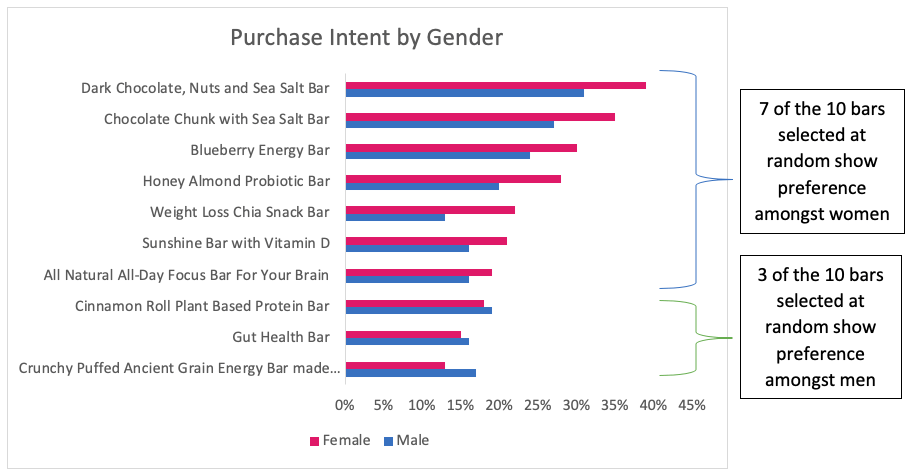Debunking the nutrition bar binary
At a time when men are doing more and more of their household’s grocery shopping, why are so many nutrition bars getting a feminine makeover? There are bars and balls explicitly for women, and there are bars that just look a little more feminine. Even Bearded Brothers energy bars updated their formerly hipster packaging with a pattern we could have sworn we saw on our grandmother’s china at Thanksgiving.

It wasn’t that long ago the branding of bars looked like they were straight out of Men’s Health magazine (PowerBars, Muscle Milk bars and Clif bars, we’re looking at you). Fast forward 25 years and bars have a completely new (and more feminine) look.
Are women more interested in bars? The NEXT Data & Insights team looked back at 10 of the bars we’ve tested in the NEXT Concept Lab in 2019. Using a census-balanced sample of approximately 500 men and 500 women, we set out to find whether the bars were more appealing to women or men. What we saw surprised us a little.
At first blush, it did appear that bars were more appealing to the fairer sex. Do they snack more? Are they busier during the day and less likely to sit down for meals? Are they feeding hungry children on the go? Are they more attuned to our physical needs when rock-climbing or running?
We can’t say for sure that women are buying more bars. If they are, we can’t say precisely why that would be. However, it appears there might be good reason that so many energy bar companies are taking a feminine approach to branding. Over the 10 bars we looked at, an average of 24% of women said they could buy the bars, while 20% of men said they would. That’s a big difference.

So, what is drawing more women to these bars, none of which made specific claims about being tailored for women? Is it “permissive indulgence” – the idea that more bars are filled with chocolate and peanut butter, yet market themselves as energy bars instead of candy bars? Is it that some of the claims – probiotics or weight loss – are more appealing to women? Or is it just less masculine packaging? Certainly some women-specific bars have smaller portion sizes or ingredients that appeal more to women, but the bars we looked at performed better with women despite making few or none of these claims.
Next time you’re browsing the bar aisle, take a look at the selection through the lens of gender. And start 2020 on the right foot by testing your product concepts in NEXT’sConcept Lab and gaining valuable insights with our budget-friendly Market Research Surveys.



